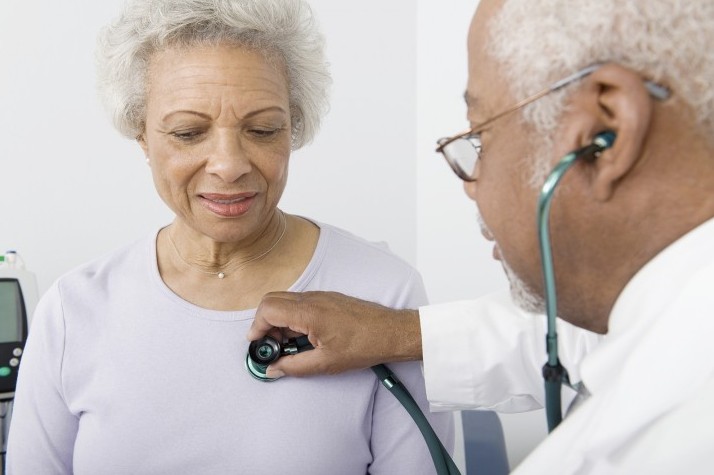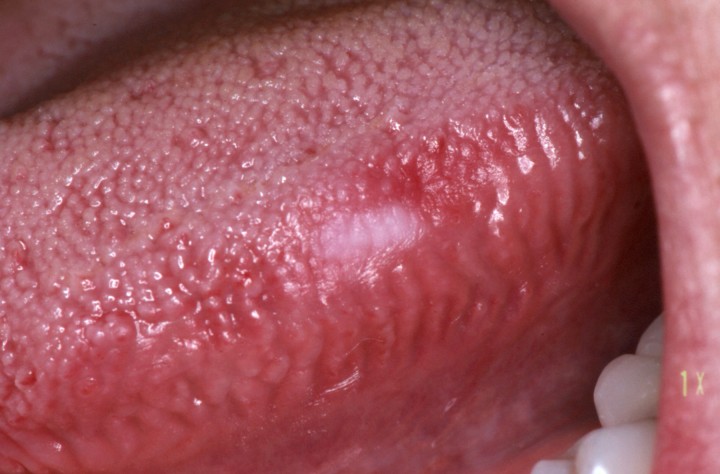Cancer is the leading cause of premature death worldwide. It is estimated, however, that thousands of deaths could be avoided each year if cancers were diagnosed early.
Some cancers survival rates increase by over 70% when detected and treated early.
Since there are so many different types of cancer, precise symptoms do vary but there are often telltale signs to detect cancer early enough and drastically improve your chance of survival.
So if you notice a few of the signs in the following pages, tell your doctor.
1. Fatigue

Cancer related fatigue differs from common tiredness as it has no precise cause and effect. Whilst everyone can get tired after activity or a full day, this type of fatigue is not related to activity nor gets better after rest or sleep. It is an unusual full body tiredness which is not relieved by sleep and occurs throughout the day. It is a constant, prolonged and extreme lack of energy where normal day-to-day activities are challenging and even the arms and legs can feel heavy and hard to move. A cancer may cause fatigue as the cancer cells use up the body’s energy supply and change the way the body makes energy from food. It is a common early symptom in some cancers like leukemia or stomach or colon cancers where blood loss occurs but is not obvious and will cause fatigue.
2. Unexplained Weight Loss

Weight loss for no known reason, not through stress or change in diet or exercise is called unexplained weight loss. It is a common sign in the early stages of some types of cancer. 60% of people with lung cancer and 80% of people with stomach, pancreatic or esophageal cancer have lost a significant amount of weight by the time they are diagnosed. Although it is often characterized by loss of appetite, some people in the early stages of cancer may still be eating normally and yet still lose weight. If you are not dieting and you lose more than 5% of your normal weight in 1 month, or 10% in 6 months, you should ask your doctor to investigate as this can be the first sign of cancer.
3. Feeling Bloated or Swollen Abdomen

Persistent bloating or increased size of the abdomen can be typical symptoms of a number of cancers. Feeling bloated can cause you to feel full quickly, even after a small meal or you may have difficulty eating at all. Increased abdominal size or persistent bloating are common signs of ovarian, uterine or stomach cancer. Colon cancer can block the inside of the colon, causing progressive bloating. If the cancer is higher up in the colon, bloating may be the only initial symptom. An enlarged abdomen is common in liver cancer and can be caused by the growing tumor or the build up of fluids. If you have bloating on most days, for 3 weeks or more you need to see your doctor.
4. Thickening or Lump in any Part of the Body

Many cancers can be felt through the skin. These cancer signs occur mostly in the breast, testicles and lymph nodes (glands), such as in the neck, armpits or groin and may also show up as red or thickened skin rather than a lump. The most common symptom of a testicular cancer is a lump or swelling in part of one testicle. It can be as small as a pea or it may be much larger. A lump in the neck is a common symptom of head and neck cancers such as thyroid, larynx and nasopharyngeal cancer? The first symptoms of breast cancer for many women are a lump or change in the size, shape and feel of the breast or nipple. It may be accompanied by a swelling or lump in the armpit. A lump caused by cancer is usually hard, irregularly shaped and firmly attached deep in the soft tissue or under the skin and is usually not painful. If you notice a new lump or one that has grown in size it may be an early sign of cancer and should always be reported to a doctor.
5. Pain

Pain is one of the ways our bodies tell us that something is wrong. Cancer related pain can range from a dull ache to a sharp pain and may start suddenly and be ongoing or may start as a pain that comes and goes. Pain is commonly one of the earliest symptoms of bone cancer. At first, the pain may not be constant and may only worsen with movement. Approximately 20% of men have a sharp pain in the testicle or scrotum as a first symptom of testicular cancer. Lung cancers may press on nerves resulting in pain in the shoulder, chest, back or arm even before they cause any difficulty breathing or coughing. A headache that does not go away, worsens with pressure such as coughing, bending or sneezing, and does not get better with treatment may be a symptom of a brain tumor. You should see a doctor if you experience sudden pain lasting a few days or pain that comes and goes but continues for longer than a month.
6. Shortness of Breath

Shortness of breath, dyspnea ,is characterized by a feeling of inability to get enough air. It can be described as a tightness or feeling of suffocation. Some types of cancer can grow very near the tissue that surrounds your heart. This can interfere with how much blood the heart can pump out and can cause shortness of breath. Cancer in or near the lungs may cause a blockage to the tubes that carry air. Breathlessness is also common with breast cancer tumors. Where there is build up of fluid in the abdomen, such as is common with ovarian or liver cancer, the increased pressure on the diaphragm makes it harder for the lungs to expand when you breathe in. Additionally, many types of cancer may cause anemia, which can make you breathless because your body is carrying less oxygen. Ask your doctors to investigate any feelings of breathlessness.
7. Skin Changes

The skin offers a window to what is going on inside the body and skin changes can be the first sign of internal malignancy. Skin discolorations such as yellowing skin or darkening skin are important signs of internal disease. Redness or bruise like coloring of the breast is an early sign for inflammatory breast cancer, as are changes in the texture of the skin such as dimpling. Itching is another common symptom in many types of cancers. Up to 30% of people with Hodgkin lymphoma have itching of the whole body. Itching is often worse on the legs and chest. Sometimes skin changes can be seen on the nail folds and cuticles and even noticing subtle changes can lead to early cancer diagnosis. When it comes to skin cancer, existing moles that develop irregular borders and change in shape or size must be examined. Any new growths or dark spots, dry, scaly or pinkish patches or any sores that change, itch or bleed and won’t heal may also indicate skin cancer, where early treatment is essential.
8. Fever or Night Sweats

A fever is a rise in normal body temperature, generally 36- 37ºC. When you have a fever, your body temperature rises above 38ºC (100.4ºF). When it is between 37ºC and 38ºC, it is called a low grade fever. A fever is the body’s response to infection or illness and if is raised for some time, it can be a sign that something more serious is wrong. Cancer accounts for about 20 to 30 percent of fevers where the origin is unknown. Fever may be a sign of early cancer in the case of blood cancers such as leukemia or lymphoma. Fever may also reveal colon and kidney cancer at an early stage. Fevers related to cancer are persistent, meaning they last longer than three days or come and go repeatedly. It may occur with or without other symptoms. How high a fever is does not indicate the severity of a condition. A persistent low-grade fever may be an early warning sign even though the fever itself is not high. All such fevers require further investigation.
9. Change in Bowel Habits

The term “change in bowel habits” can include any constant change in frequency, consistency (diarrhea or constipation), color, shape or caliber of the stools. Sometimes cancer can block the bowel. This is called a bowel obstruction. The symptoms include constipation and being unable to pass wind. Constipation is defined as having less than three bowel movements in a week. Small, hard stool is also an indicator of constipation. Constant diarrhea, defined, as loose, runny or watery stool should also be investigated. Changes in shape of your stool such as if your stool becomes thin, narrow or ribbon-like could be an indication of changes inside your colon caused by cancer. Likewise, changes in color, such as dark or blackened stool or blood in the stool, may also indicate changes in the colon. A feeling of discomfort or an urge to have a bowel movement, even after opening your bowel or a feeling of not having fully emptied your bowels after going to the toilet can be symptoms of bowel cancer. Any changes lasting three weeks or more should be evaluated.
10. Changes in Bladder Habits

Changes in bladder function can include a variety of symptoms. The need to urinate often, feeling pain or burning when going or a frequent urge to urinate whether or not anything is produced are all possible signs that need investigation. Cancer can develop in the bladder, kidneys, renal pelvis (the part of the kidneys urine is collected) or ureter (the tubes that carry urine from the kidneys to the bladder). Tumors may also cause incontinence, urinating when you don’t intend to. Needing to pee more often or more urgently than normal can also be a sign of ovarian cancer. Prostate cancer may also cause a sudden and urgent need to pee, night waking to use the bathroom, dribbling urine after you think you’re finished, beginning to urinate, and more frequent urination day or night. Knowing what changes to look out for can mean finding cancer early enough to have a higher chance of treating it successfully.
11. Nagging Cough

Many people dismiss or adapt to a chronic cough, attributing it to something else. Since lung cancer is most treatable in the early stages of the disease, finding a cancer as early as possible is extremely important.A persistent cough, defined as a cough that lasts for at least 8 consecutive weeks, should always be investigated. At least half of people diagnosed with lung cancer have a cough that just wouldn’t go away, at the time of diagnosis. Excessive coughing are also common signs of laryngeal and thyroid cancer. Cancer coughs have no specific pattern and may occur during the day only, or continue through the night, interfering with sleep and causing daytime fatigue. The cough may be dry or you may cough up mucous, it may be accompanied by chest pain, or you may notice a change in a cough you have had for a long time.
12. Difficulty Swallowing

Difficulty swallowing, called dysphagia, occurs when a person has trouble getting food or liquid to pass down the mouth or throat. Some people may gag, cough, spit, dribble or choke when trying to swallow, while others may feel like food is sticking on the way down. Mouth or throat cancers can cause the passages to become restricted or narrowed making swallowing difficult. It is a common symptom of a variety of head and neck cancers such as esophageal, oropharyngeal cancer, thyroid and laryngeal cancers. It may also be amongst the symptoms for people with stomach cancer. Initially, the problem may be noticed when large pieces of poorly chewed food are swallowed but can get progressively worse to the point that even liquids become difficult to swallow.
13. Red or White Patches or Sores Inside the Mouth

Cancer of the oral cavity (mouth) is the most common type of head and neck cancer. Most of these cancers can be cured if discovered early. The most common symptoms include a sore or lump on the lip or in the mouth that does not heal or bleeds easily, and white and/or red patches or coating on the gums, tongue, or cheeks that doesn’t go away. The inside of the mouth may also appear red, shiny or swollen. If you wear dentures, they may become uncomfortable or fit poorly. White patches inside the mouth may be leukoplakia, which is pre-cancerous and if its not treated, can become mouth cancer. Any long-lasting mouth changes should be checked by a doctor or dentist right away.
14. Repeated Infections

Frequent infections are often repeatedly treated only for infection itself but can also be a sign that something more serious is wrong. Repeated respiratory infections such as pneumonia and bronchitis can be a common early symptom of lung cancer. A tumor located near an airway can cause an obstruction that predisposes you to these infections. Urinary tract infection symptoms that don’t improve with treatment or time could point to bladder cancer. Nasal cavity cancer can cause chronic sinus infections and nasal congestion that does not respond to antibiotic treatment and persistent sore throats are a common symptom with a number of throat and neck cancers. As chronic lymphocytic leukemia develops repeated infections occurring over a short space of time are common. Infections, when occurring regularly, should always be investigated further.
15. Hoarseness

If your voice is hoarse, you may have a raspy, weak, or airy quality to your voice that prevents you from making smooth vocal sounds. It is defined as an abnormal change to the voice producing a rough, harsh sound. A hoarse voice persisting for longer than three weeks can be a sign of cancer. It may be caused by excessive coughing or due to a tumor pressing nerves that travel to the vocal cords. It is the most common sign of cancer of the larynx-the voice box-where persistent hoarseness is often the earliest sign. It is also a common symptom with other neck and throat cancers such as thyroid cancer, hypopharyngeal cancer and oropharyngeal cancer. If you have persistent hoarseness lasting for more than 10 days, seek prompt medical attention, as it may be a sign of cancer.
16. Unusual Bleeding

Unusual bleeding can happen in early cancer and should always be evaluated. If you experience bleeding with no obvious injury, talk to your doctor. Coughing up blood may be a sign of lung cancer or Laryngeal Cancer. Blood in the urine is usually the first and most common sign of cancer of the bladder or kidneys. If you have blood in your urine, you may see pink, brownish, or red discoloration. Blood in the stool could be a sign of colon or rectal cancer. A bloody discharge from the nipple can indicate breast cancer. For women, any abnormal vaginal bleeding should always be checked out. For those after menopause, vaginal bleeding is never normal. For those still getting a period, any changes in the menstruation or spotting in between should be promptly investigated. Contact bleeding, occurring after sexual intercourse, also needs to reported to the doctor. Cervical, ovarian, vaginal, endometrial and uterine cancer can all present with irregular bleeding and are often overlooked by women in the early stages.
[Featured Image Credit: statnews.com]
